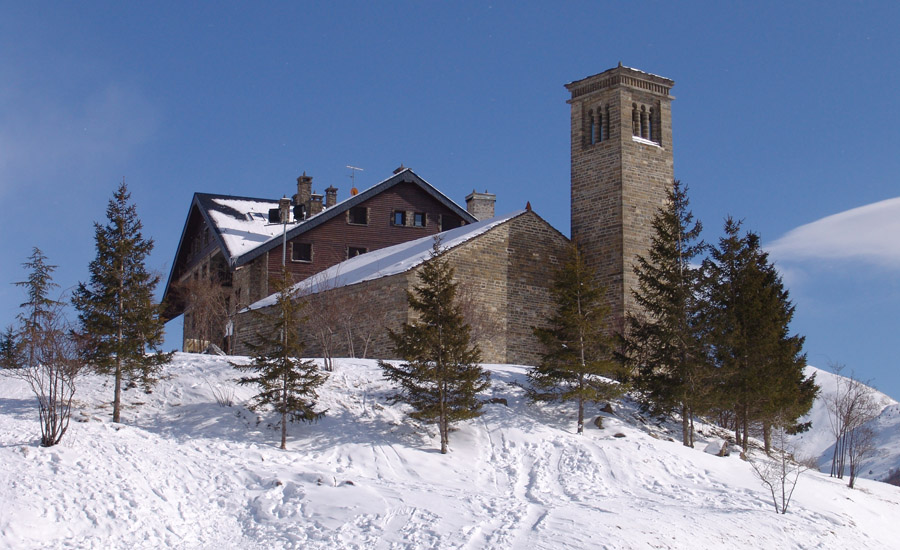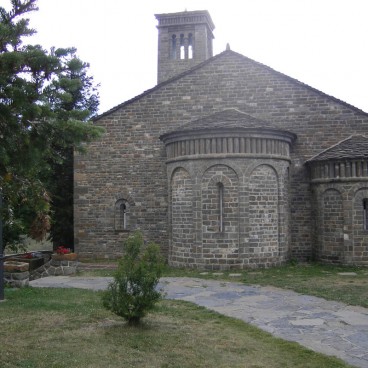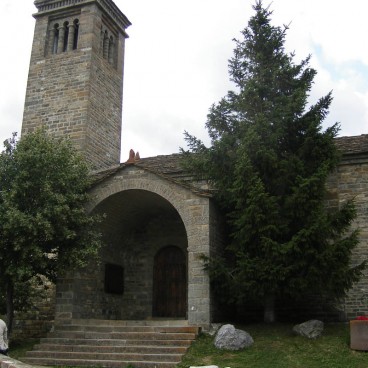Saint Salvador’s, Basarán – San Salvador de Basarán

LOCATION
- Locality: Formigal (Sallent de Gállego)
- Where: Formigal
- How to get there: From the A-136 Portalet-Sabiñánigo, take the turn-off for Formigal.
- Signposting: Yes
- Spatial orientation: In the lower part of the residential area of Formigal
The Basarán church (10th/11th Century) stands out in the tourist resort of Formigal. It was moved to there from the abandoned village, Sobrepuerto, in 1974.
A typical Serrablo Church, this building consists of two rectangular spaces side by side, each one having its own different-sized semi-circular apse. The larger apse corresponds to the church area itself, while the smaller apse corresponds to the chapter house or sanctuary. The outside of the two apses features the typical Serrablo decoration of a frieze of columns and blind arcades.
The Church belonged to the Monastery of Saint Urbitius and Saint Michael (Monasterio de San Urbez y San Miguel) in Basarán, which was attached to Saint Peter’s monastery in Raba, in the Ribera de Fiscal area. From the first half of the 11th Century until the 15th Century it is mentioned in several historic documents. When the Church was rebuilt, the tower and entrance door were added. These were not part of the original structure and are copied from the church at Lárrede, an excellent example of the Serrablo Churches.
The Church houses a number of pieces from churches in other abandoned villages, such as the 12th Century baptismal font from the parish church at Ruesta, the holy water font from the parish church in Cillas (17th Century) and the remains of a mural from the shrine to the Virgin Mary in Basarán, from the 14th Century.

